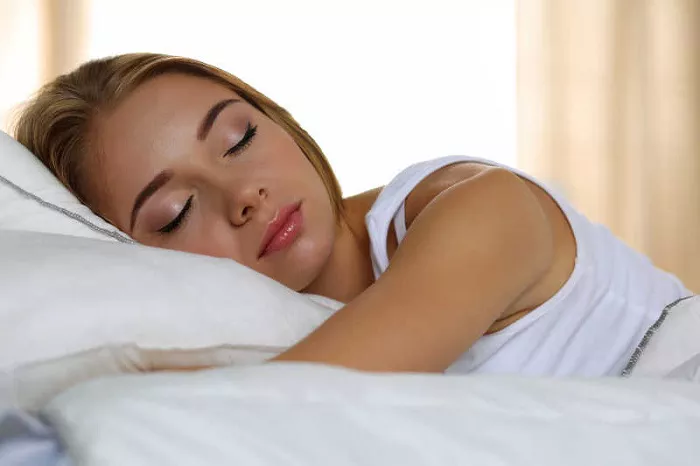Undergoing a hair transplant is a significant decision that requires careful post-operative care to ensure optimal results. One of the most common concerns patients have is about sleeping positions and when they can safely rest their head on a pillow. Proper sleep posture is crucial to avoid damaging newly implanted grafts, reducing swelling, and promoting faster healing. This article provides a detailed guide on when and how to sleep after a hair transplant, along with essential precautions to follow.
Why Sleeping Position Matters After a Hair Transplant
The first few days following a hair transplant are critical because the grafts are delicate and vulnerable to dislodgement. Sleeping incorrectly can lead to:
- Graft displacement – Friction or pressure may loosen newly implanted follicles.
- Increased swelling – Lying flat can cause fluid accumulation in the forehead and scalp.
- Infection risk – Poor hygiene or contact with dirty pillowcases may introduce bacteria.
To prevent complications, patients must follow strict sleeping guidelines during the initial recovery phase.
The First 48 Hours
The first two nights after surgery require the utmost caution. Here’s what you should do:
Sleep in a Semi-Upright Position
- Use a recliner or stack multiple pillows to keep your head elevated at a 45-degree angle.
- This minimizes swelling by allowing fluids to drain away from the scalp.
Avoid Direct Contact with the Pillow
- Do not let the transplanted area touch the pillow for at least 48 hours.
- If necessary, use a neck pillow to support your head without applying pressure to the grafts.
Use a Travel Pillow for Support
A U-shaped travel pillow can help maintain proper head alignment while preventing friction.
Days 3 to 7
After the first 48 hours, grafts begin to stabilize, but caution is still necessary.
Continue Elevating Your Head
Sleep with 2-3 pillows to keep your head elevated, reducing swelling.
Switch to a Soft Clean Pillowcase
- Use a silk or satin pillowcaseto minimize friction.
- Change pillowcases daily to prevent infection.
Avoid Tossing and Turning
Sleep on your back only—side or stomach sleeping can dislodge grafts.
Week 2
By the second week, most grafts are securely anchored, but some precautions remain:
Test Gentle Pillow Contact
Lightly rest your head on a soft pillow, but avoid rubbing or pressing.
Monitor for Irritation
If you notice redness, itching, or discomfort, return to an elevated position.
Resume Side Sleeping (With Caution)
After 10-14 days, you may cautiously sleep on your side if grafts feel secure.
Long-Term Care
Even after the initial healing phase, proper habits can enhance results:
Maintain Scalp Hygiene
Wash hair gently as per your surgeon’s instructions.
Avoid Hard or Rough Pillows
Memory foam or hypoallergenic pillows are ideal.
Follow-Up with Your Surgeon
Attend all post-op appointments to monitor graft survival.
Common Mistakes to Avoid
Many patients unknowingly jeopardize their results by:
- Sleeping flat too soon – Increases swelling and graft loss risk.
- Using old or dirty pillowcases – Can lead to infections.
- Ignoring discomfort – Persistent pain may indicate improper healing.
Additional Considerations for Optimal Recovery
Beyond sleeping positions, several other factors influence healing after a hair transplant. Understanding these can further enhance graft survival and comfort during recovery.
Hydration and Nutrition
- Staying well-hydrated helps maintain scalp elasticity and promotes healing.
- A protein-rich diet (e.g., lean meats, eggs, legumes) supports follicle strength.
- Avoid excessive salt, which can worsen swelling.
Avoiding Physical Strain
- Refrain from heavy lifting, bending, or intense exercise for at least 10 days, as increased blood pressure can disrupt grafts.
- Even mild activities like yoga or stretching should be done cautiously to prevent scalp tension.
Climate and Environmental Factors
- Hot, humid conditions may increase sweating, leading to irritation—use a cool, dry sleeping environment.
- If you live in a dusty or polluted area, keep your bedroom clean and consider an air purifier.
Medications and Aftercare Products
- Follow your surgeon’s prescribed antibiotics and anti-inflammatory medications to prevent infection.
- Some clinics recommend spray-on saline solutions to keep grafts moist—check if this applies to you.
Stress and Sleep Quality
- Anxiety can delay healing—practice relaxation techniques like deep breathing before bed.
- If struggling to sleep upright, ask your doctor about short-term sleep aids (non-habit-forming options like melatonin).
By integrating these additional measures with proper pillow use, you’ll create the best possible conditions for graft retention and long-term hair growth. Every patient heals differently, so always prioritize personalized medical advice over general guidelines.
Conclusion
Sleeping properly after a hair transplant is essential for graft survival and optimal results. The first 48 hours require strict elevation, while weeks 1-2 involve gradual adjustments. By following these guidelines—using the right pillow, maintaining hygiene, and avoiding pressure on grafts—you can ensure a smooth recovery. Always consult your surgeon for personalized advice based on your healing progress.By adhering to these expert recommendations, you’ll protect your investment and enjoy a fuller, natural-looking head of hair.
Related Topics

